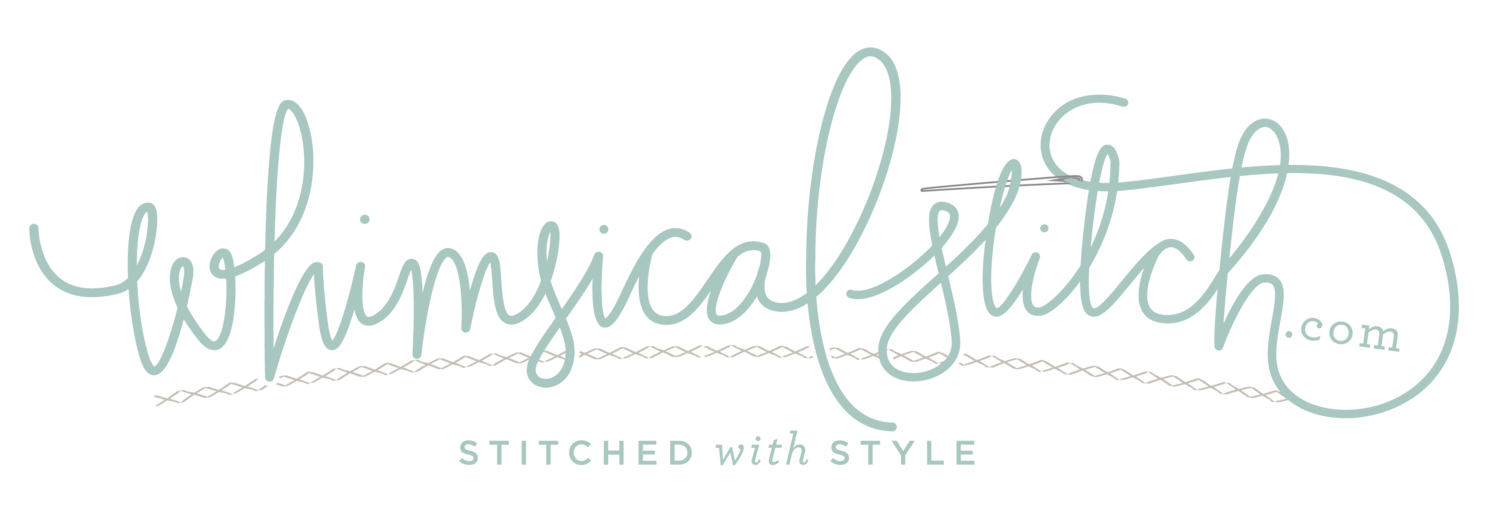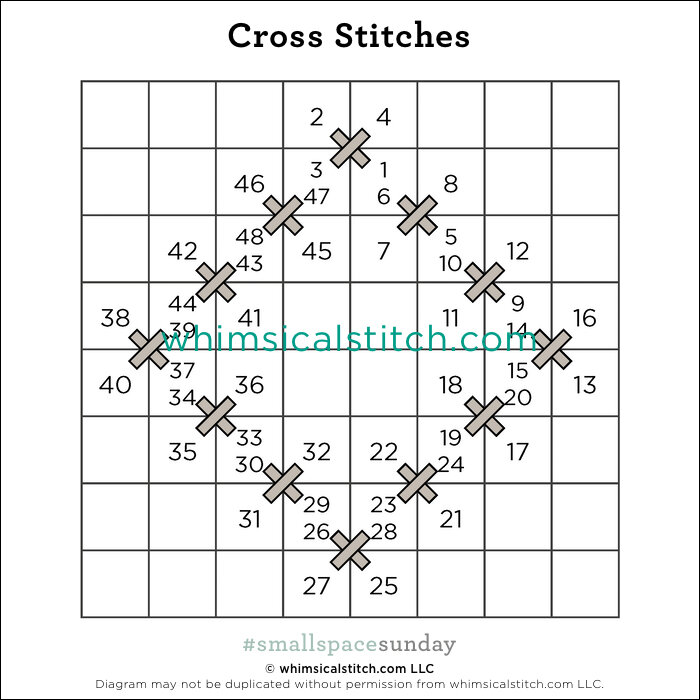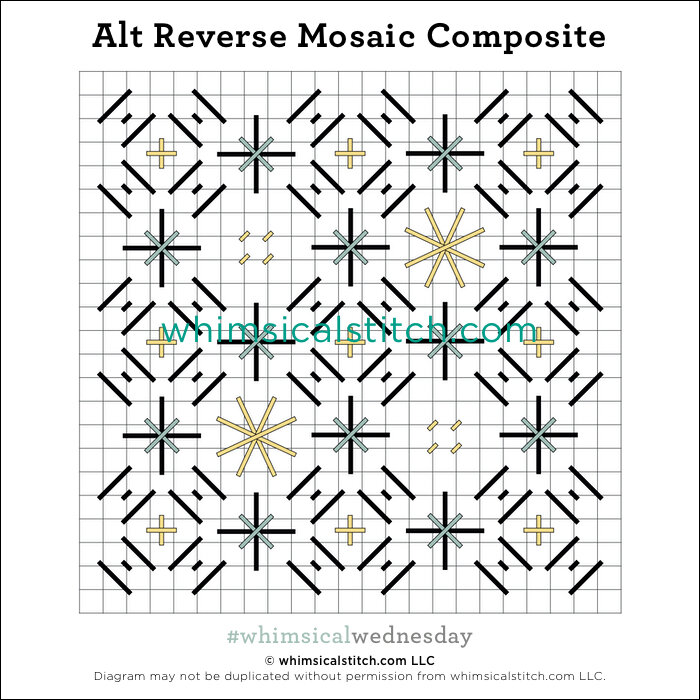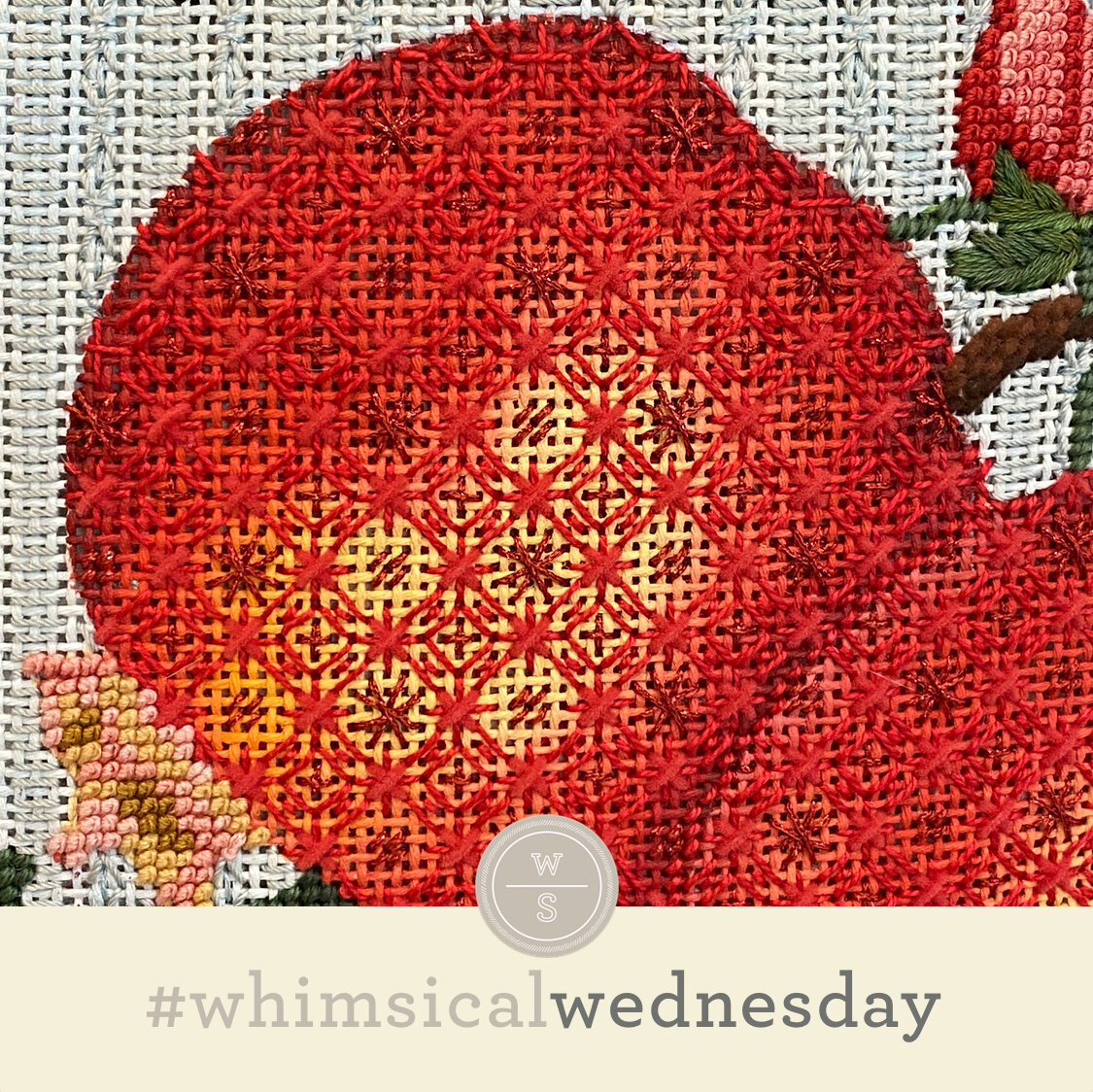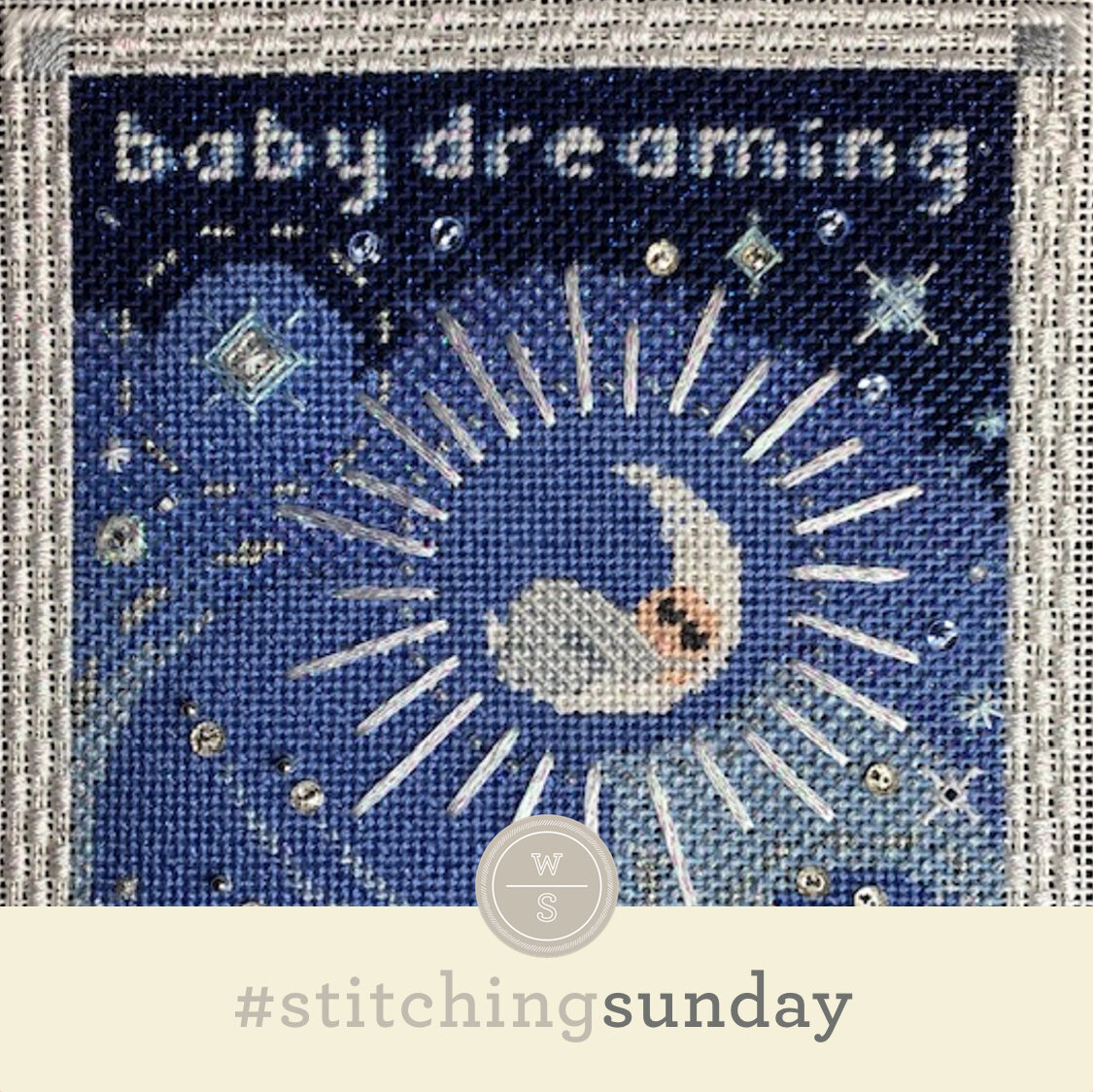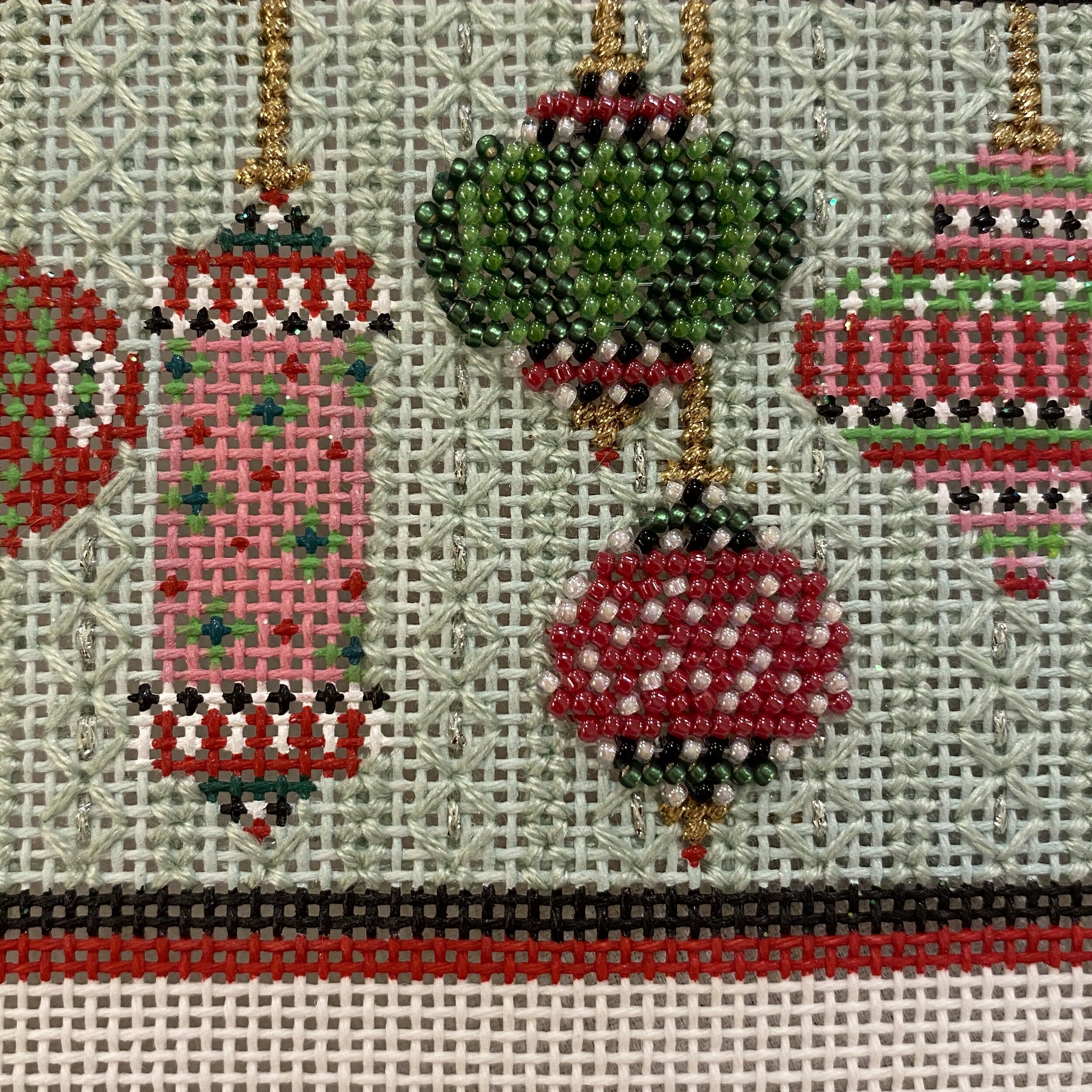Sometimes simple and small is the best way to go. Today’s #stitchingsunday is a shout-out to some of my favorite small stitches.
Click on image to see on whimsicalstitch.com's Pinterest account. Visit pinterest.com/whimsicalstitch/whimsicalwednesday for a library of all #whimsicalwednesday and #smallspacesunday stitch diagrams.
Click on image to see on whimsicalstitch.com's Pinterest account. Visit pinterest.com/whimsicalstitch/whimsicalwednesday for a library of all #whimsicalwednesday and #smallspacesunday stitch diagrams.
By the end of the day lately, I’m tapped out. Several of my works-in-progress are large, exquisite, and honestly, too much at the moment. I turned to a small canvas I had in my stash to get me through this week. (Also, loving Perry Mason and the Watchmen on HBO. Not necessarily perfect stitch TV*, but easy stitches make it easier to do both at the same time.)
The canvas is an adorable eyeglass case (on 13M) I picked up a few months ago. The letters are stitched in Cross Stitches, a trick I picked up from a fellow needlepoint junkie, with silver Fyre Werks. The advantage of a Cross Stitch, instead of a French Knot, Tent Stitch, or bead is that a Cross Stitch covers all four sides of an intersection, making the lines created by the stitches (in any direction) smooth and uninterrupted.
The background is nothing more than what I call Plain Needlepoint, but more commonly known as Basketweave, in Vineyard Silk and Pepper Pot Silk. I considered and discarded cuter and more complex stitches because I wanted the attention to go to the letters and the glasses. In addition, I didn’t want to do that much compensating around the same letters and glasses.
And, last but not least, the lenses are covered in Reverse Basketweave with a size 8 Kreinik Metallic to ensure the canvas shows through, as it would do through glasses.
These stitch diagrams, along with all other #whimsicalwednesday and #smallspacesunday stitch diagrams, can also be found on a Pinterest board here.
Be sure to follow whimsicalstitch.com on Facebook, Pinterest, Instagram, and Twitter.
If you like what you see on this blog, want to learn some very creative decorative stitches, and how to put them all together, whimsicalstitch.com has a book for you! Mary’s Whimsical Stitches is a contemporary how-to collection of more than 250 stitches for stitchers regardless of skill level. The book includes updated and sequenced diagrams from this blog, all-new stitches, and a chapter on the basics of needlepoint. For more information, visit here. Retailers carrying the book can be found here.
whimsicalstitch.com also sells Stitch Guides and Stitch Concepts for Melissa Shirley Designs, Zecca Designs, Sandra Gilmore, Purple Palm, Maggie, and Penny MacLeod, and many more. Click here to see the newest guides and click here to see the entire collection.
There’s a time and place for everything and sometimes it needs to be simple. I anticipate I will finish this tonight while I watch the Perry Mason finale. I’m confident you have the perfect spots for any of these stitches. Happy #stitchingsunday!
*Stitch TV = any programming that you can watch and comprehend while stitching. I prefer it to not be completely vacuous; I’m also not a fan of overly harsh reality TV. My favorite Stitch TV includes binging on old series I already know and love (Justified, I’m looking at you), easy comedies (Parks & Rec, anyone?), Great British Bake Off (who doesn’t love an English accent with their sweets?), and sports (or what is passing as sports TV these days).
A Note about Diagrams
I use color in diagrams to make them as clear as possible. The primary function of different colored lines is to illustrate a stitch sequence. For example, layering of colors demonstrates you add them in that order. They can also provide ideas on how to integrate additional threads (one line for each color). Or, you can use the same thread for all color lines. That's where I encourage you to use your imagination for the space you are stitching!
